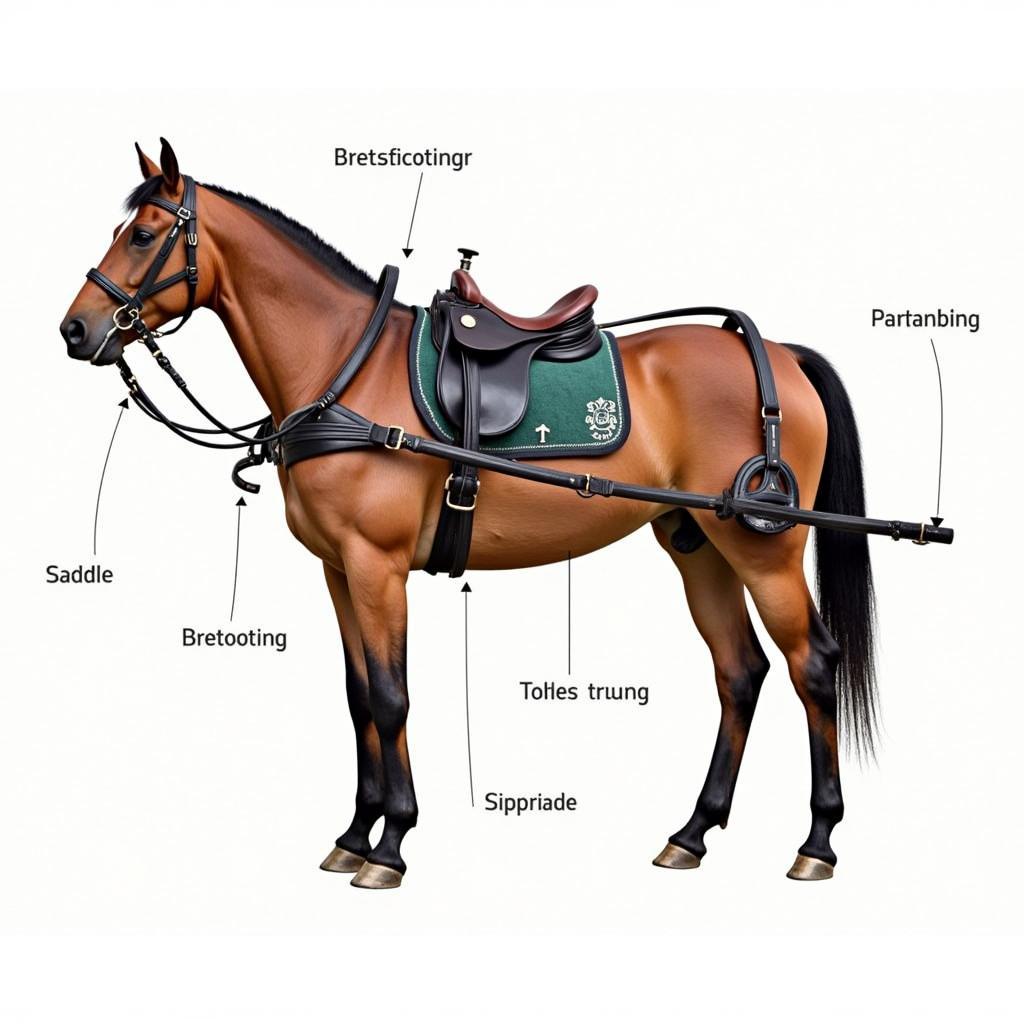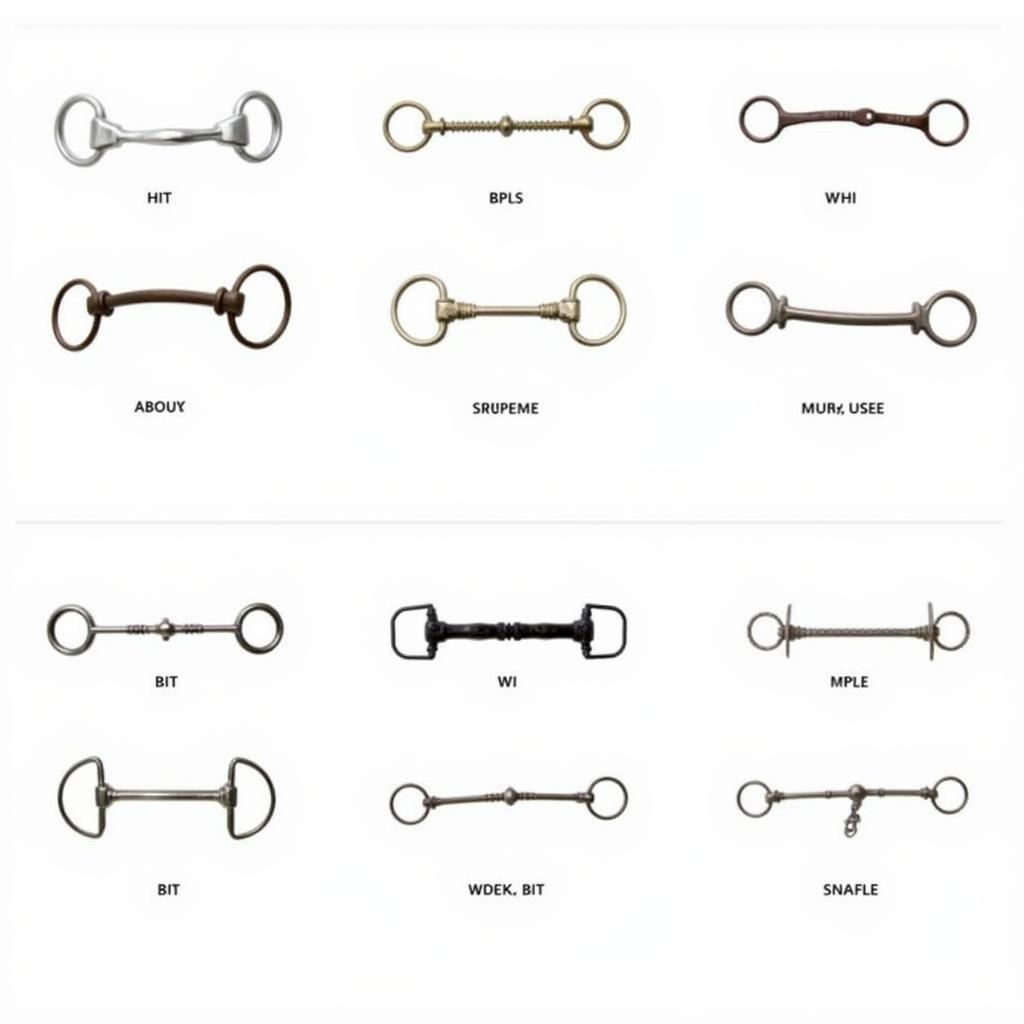Driving Harness Horses is a rewarding experience, connecting you with a rich equestrian tradition. Whether you’re a seasoned whip or just starting your journey, understanding the nuances of driving harness horse selection, harness fitting, and driving techniques is crucial for a safe and enjoyable experience. This guide will equip you with the knowledge you need to excel in the world of driving horses.
Choosing the Right Driving Harness Horse
Selecting the right driving harness horse is the first step towards a successful driving experience. Temperament, conformation, and training all play a crucial role. A calm and willing disposition is essential, as driving horses must be comfortable with traffic, noise, and other distractions. Conformation-wise, a strong back, well-angulated hindquarters, and sound legs are important for carrying the weight of the carriage and performing the required movements. Consider the horse’s previous experience as well. A horse with prior driving experience will have a smoother transition, while a green horse will require more time and patience. Don’t forget to consider the size and type of carriage you intend to use, as this will influence the ideal size and build of your horse.
Remember, choosing a driving horse is a significant decision. Consult with experienced drivers and trainers for guidance to ensure the best match for your needs and skill level.
After choosing the perfect horse, finding the right harness is equally important. Check out our selection of horse driving harness.
Harnessing Your Horse: A Step-by-Step Guide
Proper harnessing is crucial for both the horse’s comfort and your safety. A well-fitted harness distributes the weight evenly and allows for freedom of movement.
- Bridle Fitting: Start by fitting the bridle correctly. The bit should rest comfortably in the horse’s mouth without pinching or rubbing.
- Breast Collar or Collar and Hames: Choose the appropriate type of breast collar or traditional collar and hames based on the type of driving you’ll be doing. Ensure it fits snugly but doesn’t restrict the horse’s breathing or shoulder movement.
- Saddle and Back Strap: The saddle sits on the horse’s back and provides a point of attachment for the traces and other parts of the harness. The back strap secures the saddle in place.
- Traces and Breeching: The traces connect the horse to the carriage, transmitting the pulling force. The breeching helps the horse slow down and stop the carriage. Ensure these are adjusted correctly to allow for proper movement and control.
- Reins: Attach the reins to the bit and ensure they are the correct length for your driving style and the type of carriage.
 Driving Harness Fitting Guide
Driving Harness Fitting Guide
Driving Techniques: Mastering the Reins
Driving a horse requires a delicate balance of control and communication. Clear and consistent cues are essential for a harmonious partnership.
- Starting and Stopping: Use gentle pressure on the reins to signal stopping and a light tap with the whip to encourage forward movement.
- Turning: Guide the horse with rein pressure and body language, leaning slightly in the direction of the turn.
- Voice Commands: Incorporate voice commands to reinforce rein cues and build a stronger connection with your horse.
Practice consistently in a safe environment to develop your driving skills and build confidence.
You can find more information on the individual components of a harness at our horse driving harness parts page.
Caring for Your Driving Harness
Maintaining your driving harness is essential for its longevity and your horse’s well-being.
- Regular Cleaning: Clean your harness after each use with saddle soap and conditioner.
- Inspection: Inspect the harness regularly for any signs of wear and tear, such as cracks in the leather or frayed stitching.
- Proper Storage: Store your harness in a cool, dry place away from direct sunlight.
Different Types of Driving Harnesses
There are various types of driving harnesses, each designed for specific purposes and driving styles.
- Pleasure Driving Harness: Ideal for recreational driving and showing, these harnesses are often more decorative.
- Fine Harness: Used for formal driving competitions and exhibitions, fine harnesses feature intricate details and craftsmanship.
- Work Harness: Designed for heavy work, these harnesses are built for durability and strength.
Understanding the differences between harness types is important for selecting the appropriate harness for your needs. For those interested in smaller equines, we also offer a range of mini horse carts and harness.
“A well-maintained harness not only looks good but also ensures the safety and comfort of your horse,” says renowned driving expert, Sarah Miller.
Choosing the Right Driving Bit
The bit plays a crucial role in communication between horse and driver. Consider your horse’s temperament and experience level when choosing a bit. Explore our collection of driving bits for horses for a variety of options. “The bit is a crucial piece of equipment. It should be chosen carefully to suit the individual horse,” adds John Reynolds, a veteran driving instructor.
 Different Types of Driving Bits
Different Types of Driving Bits
Conclusion
Driving harness horses offers a unique and rewarding experience. By understanding the key elements of horse selection, harness fitting, driving techniques, and harness care, you can embark on this exciting journey with confidence. Remember that patience and consistent practice are key to developing a strong bond with your driving partner and achieving success in this time-honored equestrian discipline. Considering the use of a traditional leather horse collar can enhance both comfort and performance.
FAQ
- What is the best breed of horse for driving? Many breeds excel at driving; choosing the right breed depends on your specific needs and driving style.
- How often should I clean my driving harness? Cleaning after each use is recommended, with deeper cleaning and conditioning done regularly.
- What are the basic driving commands? Basic commands include walk, trot, whoa, and gee (right) and haw (left).
- How do I know if my harness fits correctly? A properly fitted harness should be snug but not restrictive, allowing for free movement.
- Where can I learn more about driving horses? Local driving clubs and experienced trainers are excellent resources.
- What is the difference between a breast collar and a collar and hames? A breast collar is a simpler design, while a collar and hames provide more even weight distribution for heavier work.
- What type of bit is best for a beginner driving horse? A simple snaffle bit is often recommended for beginners.
Further Questions?
For more information or to discuss your specific needs, please contact us.
Contact Us
Need help? Contact us 24/7:
Phone Number: 0772127271
Email: [email protected]
Address: QGM2+WX2, Vị Trung, Vị Thuỷ, Hậu Giang, Việt Nam.